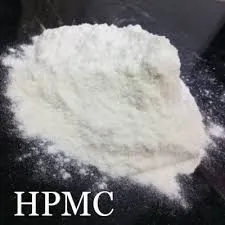
Dec . 04, 2024 16:52 Back to list
hpmc solubility in organic solvents
HPMC Solubility in Organic Solvents Understanding Its Characteristics and Applications
Hydroxypropyl Methylcellulose (HPMC) is a popular cellulose derivative widely used in pharmaceutical, cosmetic, and food industries due to its advantageous properties such as film-forming ability, adhesive qualities, and thickening capacity. While HPMC is predominantly recognized for its solubility in water, its behavior in organic solvents is less explored but equally significant for various applications, particularly in drug formulation and delivery systems.
Properties of HPMC
HPMC is derived from natural cellulose and modified through hydroxypropyl and methyl substitution. The degree of substitution affects its solubility and functional characteristics. The viscosity and gel-forming abilities of HPMC depend on its concentration and the specific grade used. Different grades of HPMC possess different molecular weights and hydrophilic-lipophilic balances that can influence solubility in various solvents, including organic ones.
Solubility in Organic Solvents
Understanding the solubility of HPMC in organic solvents is essential for formulating products that involve organic phases. Generally, HPMC has limited solubility in non-polar organic solvents due to its hydrophilic nature. However, certain organic solvents can enhance its solubility, particularly those that are polar and capable of hydrogen bonding with hydroxyl groups in HPMC.
Common solvents that might be used include dimethyl sulfoxide (DMSO), ethanol, and acetone. These solvents can disrupt the intermolecular forces between HPMC chains, facilitating dissolution. Interestingly, the presence of water can significantly influence the solubility dynamics. For instance, ternary systems involving HPMC, organic solvents, and small amounts of water often exhibit improved solubility characteristics. This interaction highlights the interplay between hydrophilic and lipophilic forces in solvent systems.
Implications for Pharmaceutical Formulations
hpmc solubility in organic solvents

The solubility of HPMC in organic solvents is crucial in pharmaceutical formulations, especially in creating drug delivery systems such as hydrogels, tablets, and coatings. In organic solvent-based systems, HPMC can participate in the formation of stable emulsions and suspensions, aiding in the controlled release of active pharmaceutical ingredients (APIs). By controlling the solubility of HPMC using specific organic solvents, formulators can tailor the release rates of drugs, thereby optimizing therapeutic outcomes.
Moreover, the film-forming properties of HPMC in organic solvents allow for the creation of sustained-release and film-coated formulations, enhancing the stability and bioavailability of sensitive drugs. This quality is particularly beneficial for poorly soluble compounds, where HPMC acts as a carrier and stabilizer.
Applications Beyond Pharmaceuticals
In addition to its pharmaceutical applications, HPMC’s solubility properties in organic solvents also lend themselves to use in cosmetics and food industries. For instance, in the cosmetic sector, HPMC can be used as a thickener and binder that disperses well in water-alcohol systems. Its ability to create smooth textures while maintaining product stability renders it an essential ingredient in formulating lotions, gels, and creams.
In the food industry, HPMC serves as a food additive for improving the mouthfeel and texture of various products. Its solubility in organic solvents allows it to be used in a variety of food formulations, contributing to the desired consistency and enhancing food preservation.
Conclusion
The solubility of HPMC in organic solvents is a multifaceted aspect of its versatility and utility across various applications. While primarily recognized for its performance in aqueous environments, the knowledge of how HPMC interacts with organic solvents opens up opportunities for innovative formulations in pharmaceuticals, cosmetics, and food products. Understanding these solubility characteristics allows researchers and formulators to design better products that can leverage the unique properties of HPMC, ultimately enhancing the performance and efficacy of end products. As the demand for sophisticated formulations continues to grow, exploring the nuances of HPMC in organic solvents will be crucial for future advancements in multiple industries.
-
Versatile Hpmc Uses in Different Industries
NewsJun.19,2025
-
Redispersible Powder's Role in Enhancing Durability of Construction Products
NewsJun.19,2025
-
Hydroxyethyl Cellulose Applications Driving Green Industrial Processes
NewsJun.19,2025
-
Exploring Different Redispersible Polymer Powder
NewsJun.19,2025
-
Choosing the Right Mortar Bonding Agent
NewsJun.19,2025
-
Applications and Significance of China Hpmc in Modern Industries
NewsJun.19,2025







